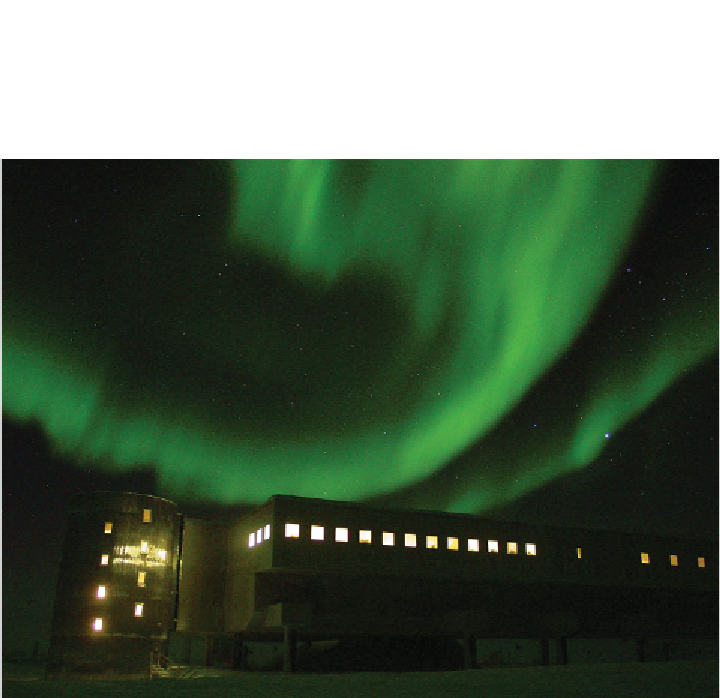Geoscience Reference
In-Depth Information
Figure 7.2
The aurora australis over the new South Pole Station. Auroras are produced by
electrons (and protons) that strike the upper atmosphere. When oxygen or nitrogen atoms
are hit by these energetic particles, they give off light at speci
c wavelengths (i.e. colours)
as they return to their ground state. The green colour depicted above results from excited
oxygen atoms between 110 and 250 km up. Although beautiful to observe, electrical
currents that are produced during such auroral displays can have deleterious effects on a
host of technological systems deployed on Earth and in space, such as satellites and power
grids. Auroras occur almost each night in the auroral ovals that circle the magnetic poles and
become visible at lower latitudes when the Sun is active and the solar wind is exceptionally
variable. (Credit: Jonathan Berry, NSF)
Earth
'
s space environment
Prior to the early space missions, the Earth
'
s magnetic
field had been viewed as
essentially a large bar magnet
with North and South Magnetic Poles located in
the southern and northern polar regions, respectively
-
sitting in the vacuum of
space. The existence of the aurora and of cosmic rays (discovered in the
-
rst
decade of the twentieth century) suggested to many early researchers that there
was more to this simplistic bar magnet picture. The satellite era
finally revealed that
the magnetic
field from the bar magnet was actually shaped roughly into the form of



Search WWH ::

Custom Search